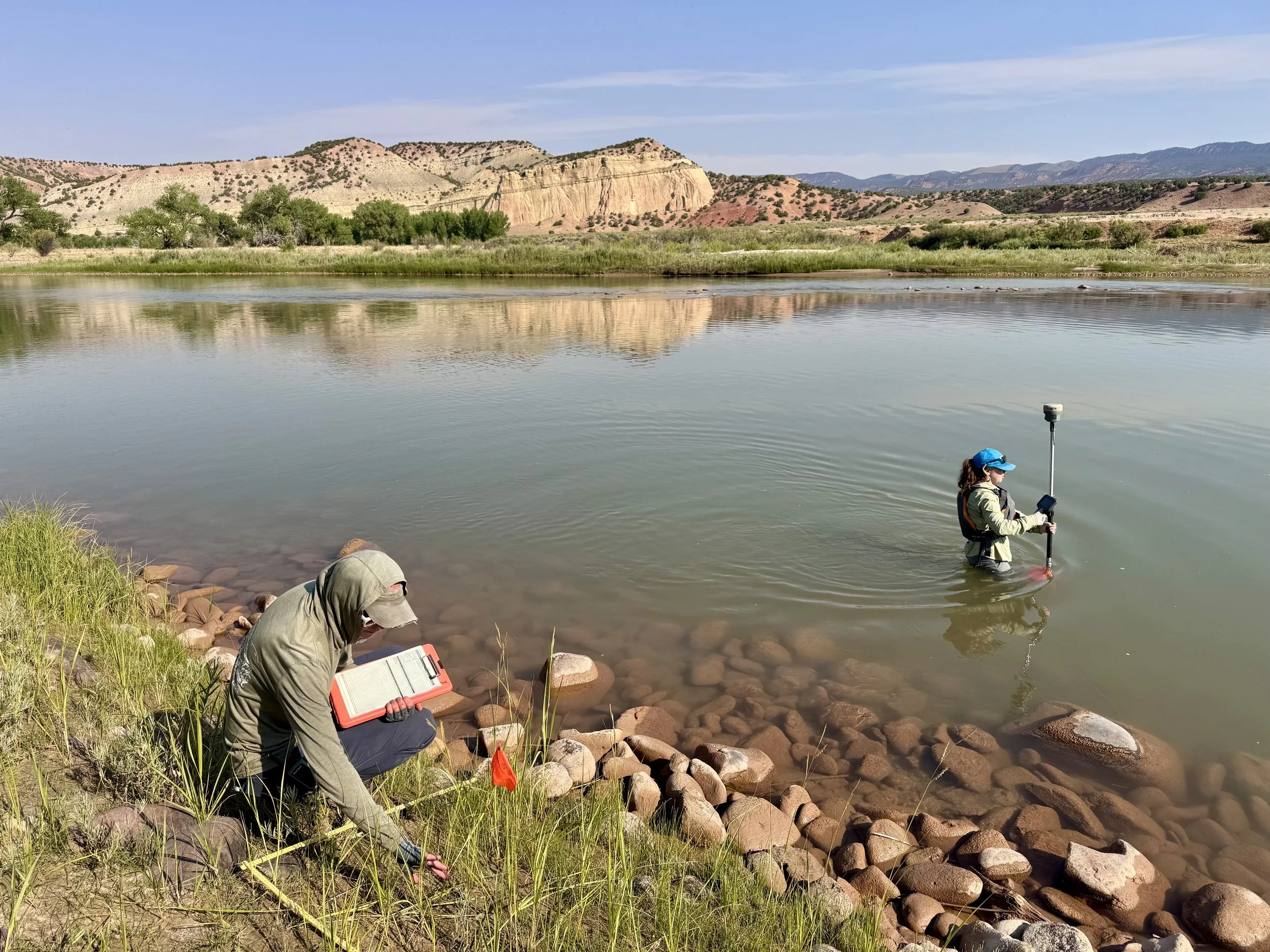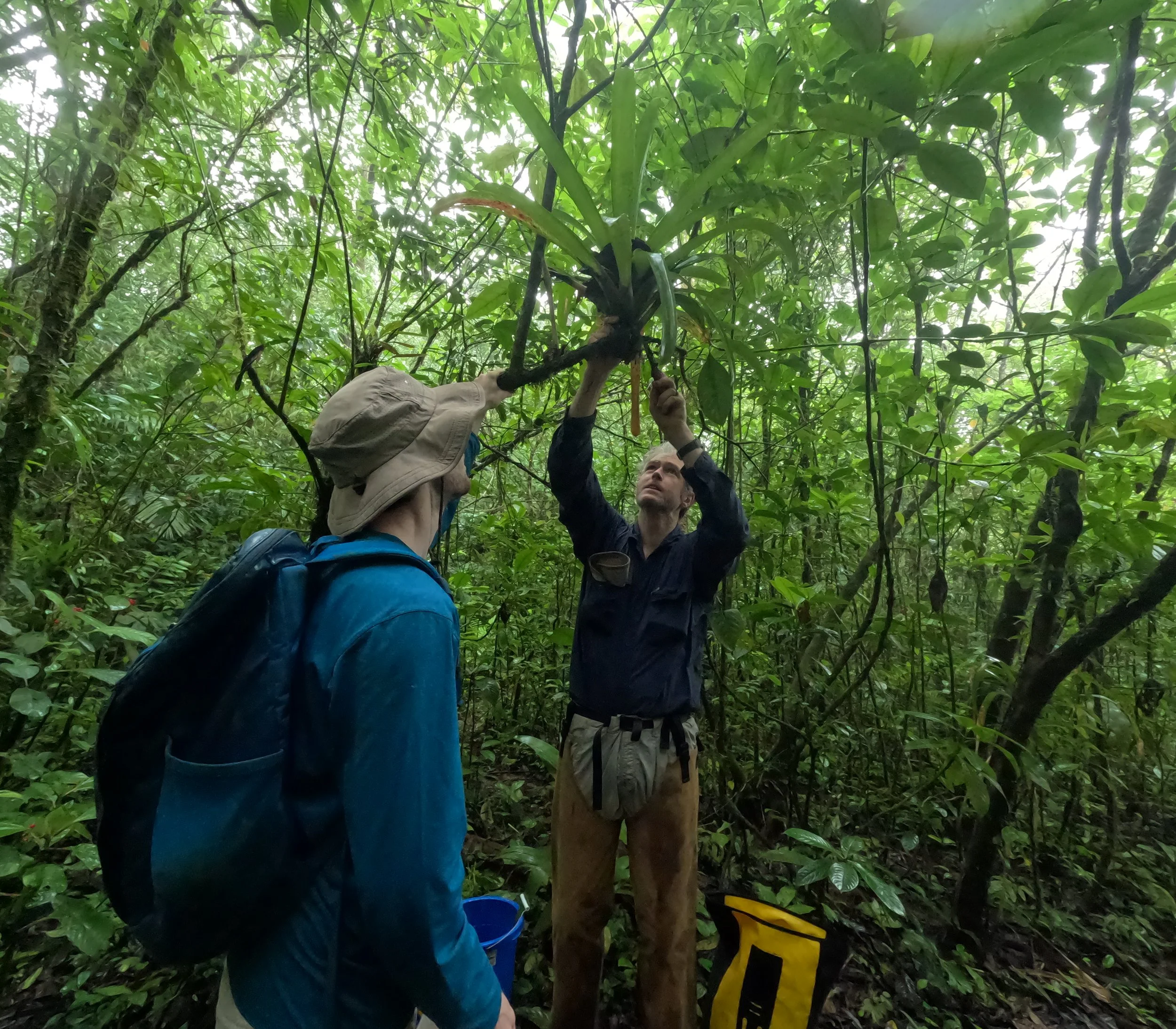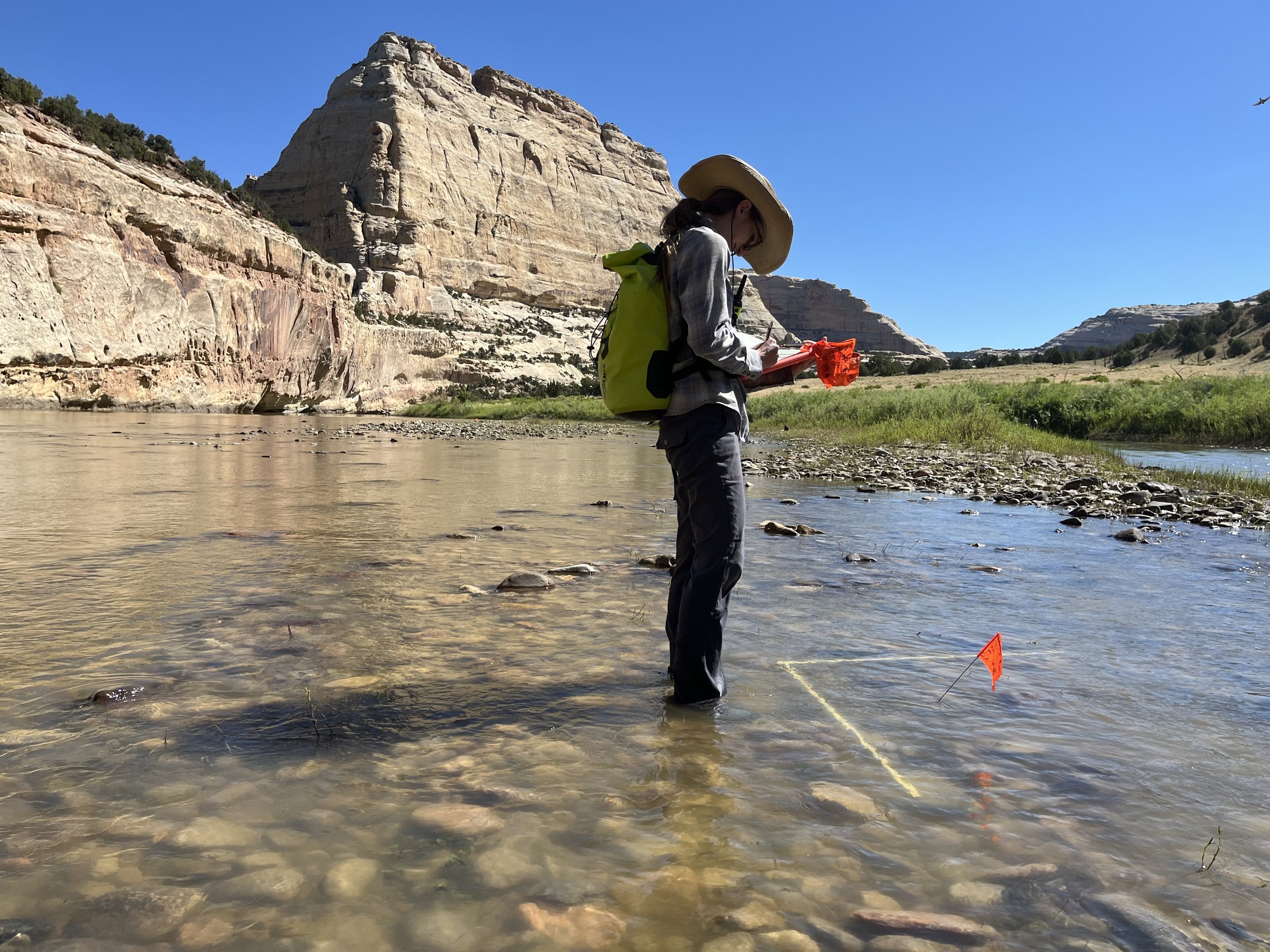My research is broadly categorized as community ecology conducted in freshwater ecosystems. I am interested in research questions that connect ecological theory to environmental observations, with particular interest in the feedback loops between the physical environment and species interactions, and how these feedbacks shape ecological communities. My research has included many different systems within freshwater environments including contaminants, fish health, cyanobacteria, macroinvertebrates, and riparian vegetation.
Current Research
Ecology of bromeliad macroinvertebrate communities
Tank bromeliad are epiphytic plants that create a unique habitat within their centers that allow aquatic organisms to capitalize on the niche space of the rainforest canopy. These plants act as natural microcosms that contain all the complexities of natural systems, but are easily manipulated and can be highly replicated. As such, these aquatic communities provide a rare opportunity to study ecological theories within completely independent natural replicates. Our research utilizes these unique aquatic ecosystems to study ecological theory and ecosystem response to environmental change. Past research has explored topics including climate effects on community composition, changes in functional response of top predators, and indirect effects on community composition and structure.
Ecogeomorphic feedbacks on the Green and Yampa Rivers
Flow regulation of major river systems in the United States has resulted in changes to river channels, encroachment of riparian vegetation, and loss of critical nursery habitat for native and endangered fish species. Along the Green River in Utah, decreases in peak flows since 1965 have promoted proliferation of riparian vegetation on the channel bed resulting in sediment deposition, channel narrowing, and channel simplification. Our research attempts to better understand the relationship between changes in flow regime from water management, sediment deposition, and changes in vegetation (i.e., biogeomorphic feedbacks) to inform management of these southwestern river systems.
Inducible defenses and predator-prey interactions
Inducible defenses are predator-induced morphological and behavioral variations within prey, and can include changes in body size or shape, reduction in movement, or production of spines or helmets. These defenses are beneficial to prey when predation pressure varies over space or time, though due to an incurred fitness cost, inducible defenses are never permanently expressed. My research has investigated the effects of altering nutrient concentrations and predator density on the inducible defense mechanisms of the protozoan, Paramecium aurelia, and how these defenses may help stabilize systems under nutrient enrichment (i.e., Paradox of Enrichment, POE). This research provides a deeper understanding of how interactions between predators and prey under varying environmental conditions is crucial to understanding how biodiversity loss may alter ecosystems through cascading trophic effects.
Past Research
Spatial and temporal distribution of organic contaminants in the Chesapeake Bay Watershed
Maternal transfer of organic contaminants in Smallmouth bass
Publications
* Denotes equal contributions† Denotes undergraduate mentee2025
McClure, C.M.*, Canham, H.*, Catalan, E., Marshall, A., Chukwuonye, G. N., Webb, M., and Leonidas, C. (In Press). Graduate student reflections on learning and implementing equitable community science to tackle compounding climate challenges. Community Science.
McClure, C.M. and Hammill, E. (In Press). Resource gradients create energy tradeoffs in the inducible defense response of Paramecium aurelia. Ecosphere.
McClure, C.M., Hancey, K.†, Hammill, E. (2025). The effects of inducible defenses on population stability in Paramecium aurelia. Oecologia. 207, 69 (2025). doi.org/10.1007/s00442-025-05709-0
2023
Adkins, J., Hammill, E., Abdulwahab, U.A., Draper, J.P., Wolf, J.M., McClure, C.M., Ortiz, A. A. G., Chavez, E.A., Atwood, T.B. (2023) Global patterns in mammal trophic diversity are explained by environmental drivers. Ecology Letters, 26(11), 1940-1950. doi.org/10.1111/ele.14306
2020
McClure, C.M., Smalling, K.L., Blazer, V.S., Schall, M.K., Sperry, A.J., Kolpin, D.W., Phillips, P.J., and Wagner, T. (2020). Spatiotemporal variation in occurrence and co-occurrence of pesticides, pharmaceuticals, and other organic compounds in rivers in the Chesapeake Bay Watershed, United States. Science of the Total Environment, 728 (2020): 138765. https://doi.org/10.1016/j.scitotenv.2020.138765
Publications Under Review
McClure, C.M., Smalling, K.L., Blazer, V.S., Schall, M.K., Walsh, H.L., Gordon, S., Alvarez, D.A., Devereux, O.H., Echols, K.R., and Wagner, T. (Under Review) Landscape drivers and potential maternal transfer of organic contaminants in riverine smallmouth bass (Micropterus dolomieu) populations in the Chesapeake Bay Watershed, USA. Environmental Toxicology and Chemistry
McClure, C.M., Atwood, T.B., Hammill, E. (Under Review). Trade-offs between available resources and predation risk determine the composition of bromeliad macroinvertebrate communities. Oikos.
Publications in Preparation
McClure, C.M., Friedman, J.M., Skaggs, E.R., Holmquist-Johnson, C.L., Enns, K.D., Perkins, D.W., Gommerman, L., and Morrison, R.R. (In Preparation) Effects of changing flow regime on riparian plant communities and channel simplification along the middle Green River, Utah. Science of the Total Environment.
Ravoth, S.M., McClure, C.M., Paez, N., Rogy, P., Combrink, L., Mumford, M., Fernandez-Fournier, P., Santos, S.P., Torres, K., Nathan, P., Hickox, M.K., McGuinness, B., Han, Z., Desrosiers, C., Ahmed, M.A., Walelu, T.K., and Srivastava, D. (In Preparation). Trends in community-weighted functional traits of a tropical aquatic macroinvertebrate community. Ecology.
Webb, M., McClure, C.M., Chukwuonye, G.N., Canham, H., Marshall, A., and Catalan, E. (In Preparation). Compounding Climate Extremes in Southwestern Watersheds: Integrating Spatial Hotspots and Resource Manager Perspectives.







